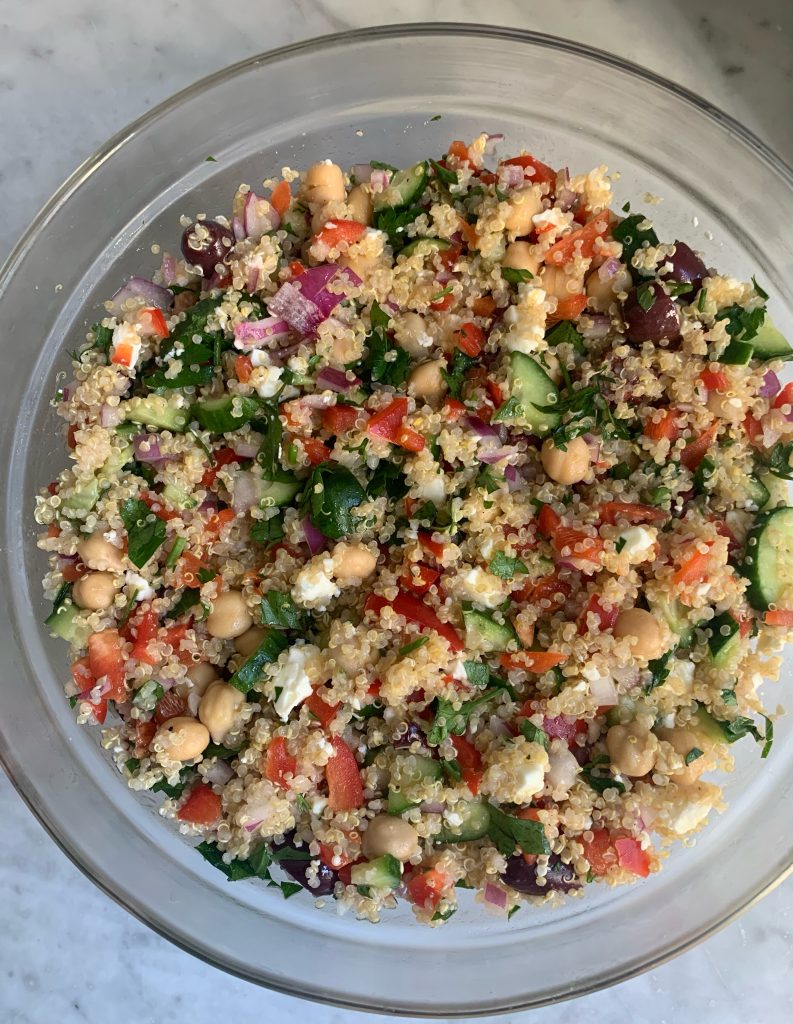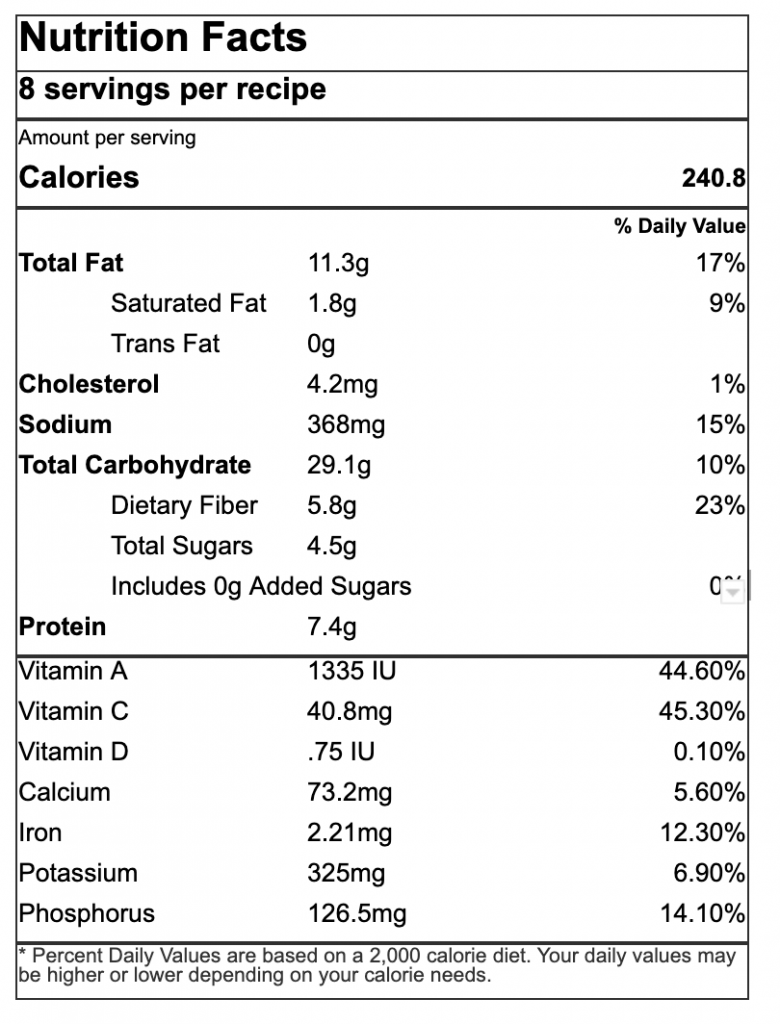The Mediterranean diet is a style of eating that is based on the natural eating patterns of those living on or around the Mediterranean sea [i]. It is centered on whole grains, fruits, vegetables, nuts, legumes, fish and fats such as olive oil, and is associated with numerous health benefits–including reducing the risk of cardiovascular diseases, diabetes, and cancer [ii]. This cold Mediterranean quinoa salad is full of protein, healthy fats, and colorful veggies, and is bursting with fresh flavor. The recipe is easy to pull together and holds up wonderfully in the fridge–making this a super easy meal prep lunch for the week!
Health Benefits
Quinoa: Quinoa is rich in protein, and contains phytochemicals including phenolics, betanins, and carotenoids that have been shown to possess antioxidant, anti-inflammatory properties. Quinoa is also a fully plant-based complete protein, which means it contains all nine essential amino acids that the human body can only get from food [iii].
Olives and Olive Oil: Olives and olive oil are rich in antioxidants, monounsaturated fatty acids, and polyphenols [iv]. These key factors make olives and olive oil protective of cardiovascular health and have been associated with an increase in HDL cholesterol (good cholesterol) and lower blood pressure [i].
Chickpeas: Chickpeas (also known as garbanzo beans) are rich in protein and fiber, and contain high amounts of magnesium, potassium, and iron [v].
Recipe
Mediterranean Quinoa Salad
Serves: 6-8

Ingredients
- 1 cup uncooked quinoa
- 2 cups water
- 1 can (15 oz) chickpeas, rinsed and drained
- 1 medium cucumber, chopped
- 1 medium red bell pepper, chopped
- ½ cup red onion, chopped
- ¼ cup kalamata olives, pitted and chopped
- ¼ cup crumbled feta cheese (optional)
- 1 cup finely chopped parsley
- ¼ cup extra virgin olive oil
- ¼ cup lemon juice
- ½ teaspoon salt
- Freshly ground black pepper, to taste
Instructions
- Rinse and drain the quinoa.
- To prepare the quinoa: Combine the rinsed quinoa and the water in a medium saucepan. Bring the mixture to a boil over medium-high heat, then decrease the heat to a simmer. Cover and cook for 15 minutes. Remove from the heat and let the quinoa rest for 5 minutes. Transfer to the fridge to cool.
- While the quinoa is cooking, prep and combine the chickpeas, cucumber, bell pepper, onion, olives, feta, and parsley in a large bowl.
- Add cooled quinoa, olive oil, lemon juice, salt and pepper. Gently mix and enjoy!
Notes:
- Quinoa can be substituted for any other grain, including couscous or farro. Keep in mind, one cup of dry quinoa is equivalent to 3 cups cooked.
- You can add many other vegetables to this salad such as tomatoes, avocado, zucchini, or try roasted red peppers instead of fresh. You can also experiment with different herbs by adding mint or basil.
- To make prep quicker, you can always use microwavable or frozen grains and pre-chopped veggies.

References:
[i] Widmer RJ, Flammer AJ, Lerman LO, Lerman A. The Mediterranean diet, its components, and cardiovascular disease. Am J Med. 2015;128(3):229-238. doi:10.1016/j.amjmed.2014.10.014
[ii] Martini D. Health Benefits of Mediterranean Diet. Nutrients. 2019;11(8):1802. Published 2019 Aug 5. doi:10.3390/nu11081802
[iii] Tang Y, Tsao R. Phytochemicals in quinoa and amaranth grains and their antioxidant, anti-inflammatory, and potential health beneficial effects: a review. Mol Nutr Food Res. 2017;61(7):10.1002/mnfr.201600767. doi:10.1002/mnfr.201600767
[iv] Romani A, Ieri F, Urciuoli S, et al. Health Effects of Phenolic Compounds Found in Extra-Virgin Olive Oil, By-Products, and Leaf of Olea europaea L. Nutrients. 2019;11(8):1776. Published 2019 Aug 1. doi:10.3390/nu11081776
[v] Landi N, Piccolella S, Ragucci S, et al. Valle Agricola Chickpeas: Nutritional Profile and Metabolomics Traits of a Typical Landrace Legume from Southern Italy. Foods. 2021;10(3):583. Published 2021 Mar 10. doi:10.3390/foods10030583
